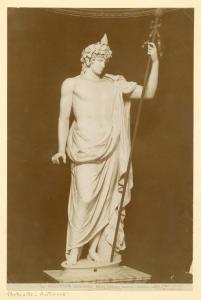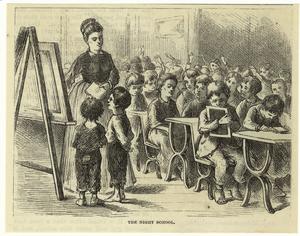 Located in an area of present day South Brooklyn, is a neighborhood called Red Hook. Almost completely surrounded by water, it holds a secret which for unknown reason has never been told. Not in history books, and never, ever, recognized as a worthy happening when annual celebrations of the "Battle Of Brooklyn" of Revolutionary War fame take place. Yet, it can be said and indeed has been said, by many notable people, the events which took place in Red Hook on August 27, 1776 had been directly responsible for saving George Washington's Colonial Army from certain defeat.
Located in an area of present day South Brooklyn, is a neighborhood called Red Hook. Almost completely surrounded by water, it holds a secret which for unknown reason has never been told. Not in history books, and never, ever, recognized as a worthy happening when annual celebrations of the "Battle Of Brooklyn" of Revolutionary War fame take place. Yet, it can be said and indeed has been said, by many notable people, the events which took place in Red Hook on August 27, 1776 had been directly responsible for saving George Washington's Colonial Army from certain defeat.Unlike today, the Red Hook of 1776 was completely surrounded by water. It consisted of a teardrop shaped hill close to 60 feet high in part, and extended east from the Buttermilk Channel, westerly to today's Dwight street, then north from Wolcott street, southerly to Reed street. Roughly six by eight square city blocks in area at its widest points.
On April 08, 1776, a regiment of men from George Washington's Colonial Army made up of hardened volunteers, under the command of one Major Shaw, using shovels, axes, and two man rip saws, felled trees and dug out an elongated entrenchment the entire west to east length of the Island. Which was also know as "Cyprus Tree Island", because the southern portion of the hill was covered with Cyprus trees as well as locust, poplar, cedar, and a rare one called the sassafras tree. But the name Red Hook as it is called to this present day became the official name of the island. These trees also effectively blocked the British ships from viewing the Fort while passing Red Hook in lower New York Bay.
The Fort became know as Fort Defiance, and was equipped with four heavy 18 pound cannons, brought down from West Point and Massachusetts. Because of the location on top of the hill, according to Major Shaw the Fort's young Commander, "We are able to fire enbarbette (over the top of the enclosures,) which is vastly better than firing through embrasures (small openings in the Forts wall). " Little did these brave men realize, just a short time later, that fateful August 27, they would be called upon to defend their Fort, and face extreme life threatening and dangerous conditions, by taking on the lead Man-O-War of the British Fleet, Commanded by Lord Viceroy, Admiral Howe.
With the American's boxed in on three sides, north, east, and south, by the British, and Hessian troops, Admiral Howe (brother of General Howe) decided he could sail around the Hook and up the East River, thereby successfully encircling Washington's Army on all sides. He sent the heavily armed ship the HMS Roebuck on a trial attempt at this endeavor, but was met with fierce northerly winds as the ship approached the East River, and because sailing vessels in those days were square riggers, they could not effectively sail against the strong winds. The soldiers at Fort Defiance witnessed this and at great risk to themselves commenced firing on the struggling ship just a few hundred feet away in an effort to take advantage of its predicament. They were so close, the Soldiers and Sailors could be heard shouting at each other. The man-o-war instantly returned their assault, with far superior firepower, and began to inflict great damage to the Fort, as well as the brave Americans who initiated the barrage.
However, the consistent wind gusts coupled with the fierce cannon fire from Fort Defiance, proved too much for the lone floundering ship, and Lord Admiral Howe ordered it to return to anchor with the rest of His fleet.
This tiny Fort, with its small complement of men saved the day for General Washington and the American Army. Surrounded on three sides by over 17,000 British and Hessian troops, the Americans had just under 10,000 ragged, tired, poorly equipped, and underfed men. Defeat by surrender or annihilation a certainty. For had the British Armada succeeded in occupying the East River that day, the over 200 ship based cannons would have made short work of them. Instead, on the evening of August 29, two days later, the Continental Army under orders from General Washington was able to successfully withdraw to Manhattan under cover of darkness, at pre-designated strategic points along the westerly shore of South Brooklyn, where he had his men locate escape vessels a month before. They then regrouped and went on to defeat the British, and win independence for the United States of America.
But history is often unkind, or blind to many facts of heroism and even acts of God. Alas, the story I relate through information and research was found quietly stored away at the bottom of shelves in the Brooklyn Public Library main branch. And for all practical purposes, never to be told. The story of "The Fort That Saved America" had been consigned to the identical fate of oblivion, that the British if successful that day in August 1776, would have rendered. Ironically, Mr. Gabriel Furman in his book (see note*) lamented this cruelty of history, when he wrote about incidents of the "Battle Of Brooklyn" He said, " I write of these happenings, ever fearful that in time they will be forgotten by all, but with fervent hope and prayer one day, a nobler pen than mine may bring them to light, that the brave forgotten soldiers involved may be given their just due and recorded properly in our history books. Indeed as it was meant to be."
Note* Gabriel Furman (Towne Of Brooklyn, published 1865)

























